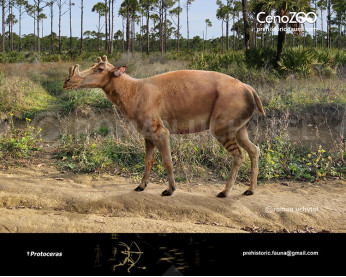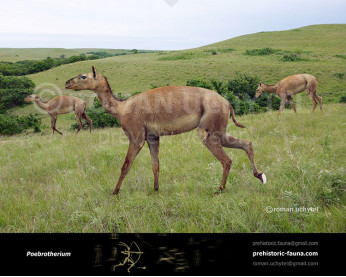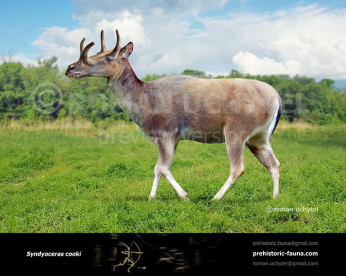Synthetoceras tricornatus
7878Synthetoceras (Synthetoceras Stirton, 1932)
Order: Artiodactyla
Family: Protoceratidae
Temporal range: during the Miocene (North America)
Dimensions: length - 1,8- 2 m, height - 70- 110 сm, weight - 80 - 250 kg
A typical representative: Synthetoceras tricornatus Stirton, 1932
Synthetoceras is a large extinct genus of Artiodactyla, of the family Protoceratidae, endemic to North America from the Miocene epoch, 13.6—5.33 Ma, existing for approximately 8.27 million years. With a length of 2 m, Synthetoceras was the largest member of its family. It was also the last, and had what is considered to be the protoceratids' strangest set of horns. The two horns above its eyes looked fairly normal and similar to those of many modern horned mammals, but on its snout it had a bizarre, long horn with a forked tip that gave it a Y shape. Only males had this strange horn, and they probably used it in territorial fights.
Synthetoceras (Synthetoceras Stirton, 1932)
Order: Artiodactyla
Family: Protoceratidae
Temporal range: during the Miocene (North America)
Dimensions: length - 1,8- 2 m, height - 70- 110 сm, weight - 80 - 250 kg
A typical representative: Synthetoceras tricornatus Stirton, 1932
Synthetoceras is a large extinct genus of Artiodactyla, of the family Protoceratidae, endemic to North America from the Miocene epoch, 13.6—5.33 Ma, existing for approximately 8.27 million years. With a length of 2 m, Synthetoceras was the largest member of its family. It was also the last, and had what is considered to be the protoceratids' strangest set of horns. The two horns above its eyes looked fairly normal and similar to those of many modern horned mammals, but on its snout it had a bizarre, long horn with a forked tip that gave it a Y shape. Only males had this strange horn, and they probably used it in territorial fights.

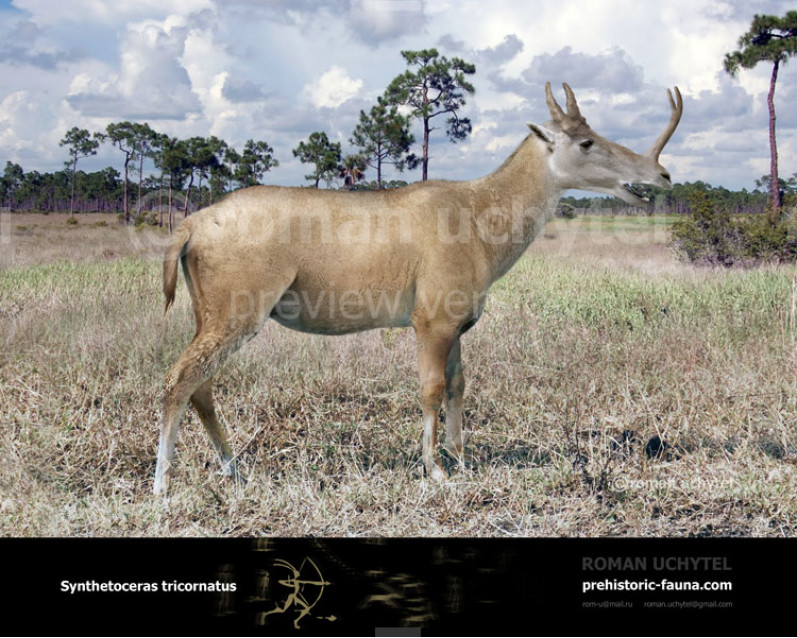
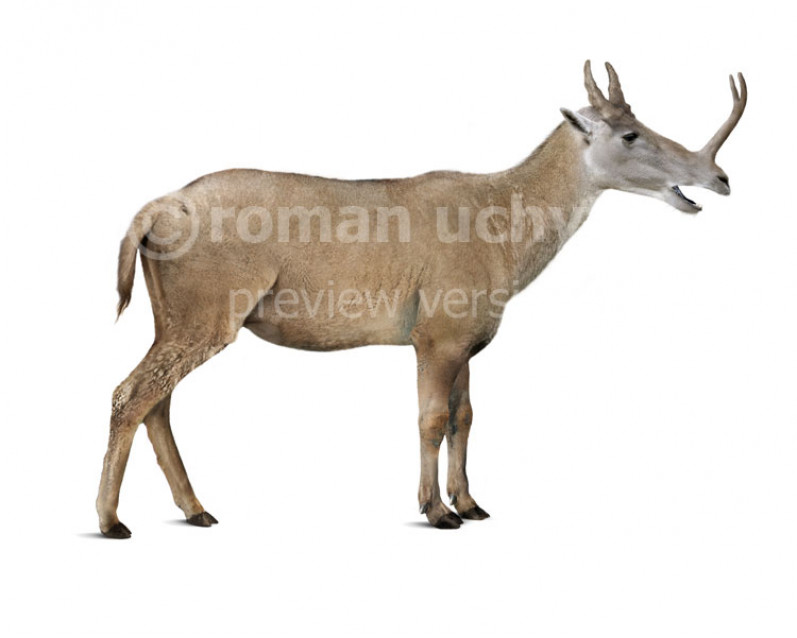
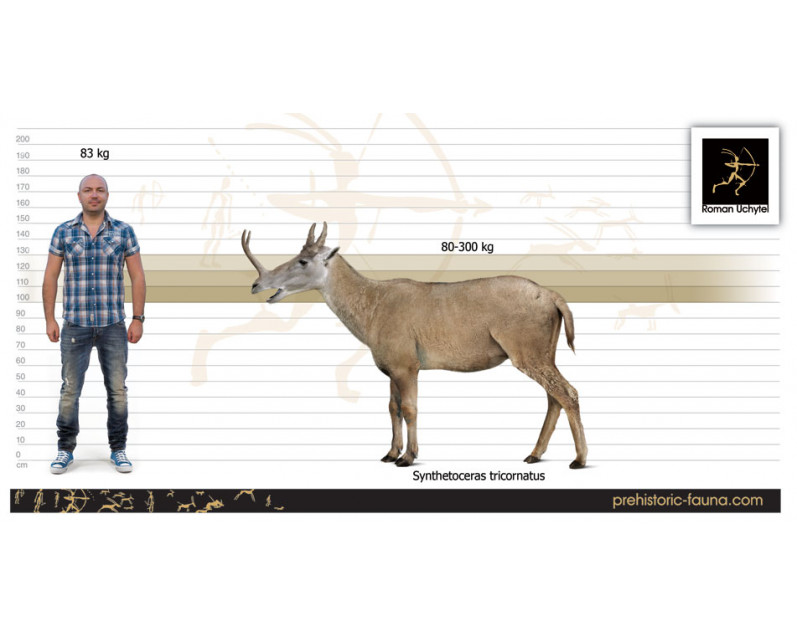



-346x277.jpg)
